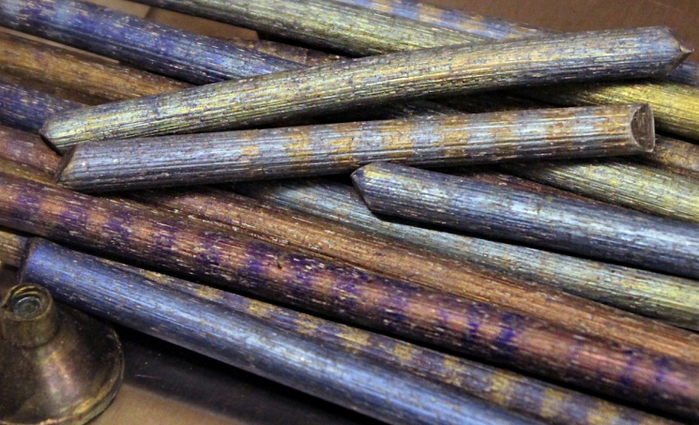DOE launches rare earth metals research hub
 (Download Image)
(Download Image)
Europium, a rare earth element that has the same relative hardness of lead, is used to create fluorescent lightbulbs. With no proven substitutes, europium is considered critical to the clean energy economy.
Housed at Ames Laboratory in Iowa, Lawrence Livermore has been involved in establishing this Energy Innovation Hub since its conception more than two years ago. In 2010, on behalf of DOE, LLNL hosted the first U.S.-Japan workshop on rare earths elements. Ed Jones and Adam Schwartz have been closely tied to the initiative.
The initial team, made up of Ames, LLNL, Colorado School of Mines and Molycorp Inc., established a 'national network' that eventually resulted in the proposal team; helped DOE on its critical materials strategy; and continued interactions on behalf of DOE at the international level.
The rare earths comprise 17 elements in the periodic table -- scandium, yttrium and the 15 lanthanides (lanthanum, cerium, praseodymium, neodymium, promethium, samarium, europium, gadolinium, terbium, dysprosium, holmium, erbium, thulium, ytterbium and lutetium). Despite their name, the rare earths (with the exception of promethium) are not all that rare, but are actually found in relatively high concentrations across the globe. However, because of their geochemical properties, they seldom occur in easily exploitable deposits.
Rare earth elements are essential for American competitiveness in the clean energy industry because they are used in many devices important to a high-tech economy and national security, including computer components, high-power magnets, wind turbines, mobile phones, solar panels, superconductors, hybrid/electric vehicle batteries, LCD screens, night vision goggles, tunable microwave resonators -- and, at the Laboratory, NIF's neodymium-glass laser amplifiers.
A DOE report said in 2011 that supply problems associated with five rare earth elements (dysprosium, terbium, europium, neodymium and yttrium) may affect clean energy development in coming years.
The new research center, which will be named the Critical Materials Institute (CMI), will bring together leading researchers from academia, four DOE national laboratories, as well as the private sector.
"Rare earth metals and other critical materials are essential to manufacturing wind turbines, electric vehicles, advanced batteries and a host of other products that are essential to America's energy and national security, " said David Danielson, assistant secretary for Energy Efficiency and Renewable Energy. " The Critical Materials Institute will bring together the best and brightest research minds from universities, national laboratories and the private sector to find innovative technology solutions that will help us avoid a supply shortage that would threaten our clean energy industry as well as our security interests."
The hub will address challenges across the entire life cycle of these materials. This ranges from enabling new sources; improving the economics of existing sources; accelerating material development and deployment; more efficient use in manufacturing; recycling and reuse; and developing strategies to assess and address the life cycles of new materials.
In addition to LLNL and Ames, other partners include Idaho National Laboratory, Oak Ridge National Laboratory, Brown University, the Colorado School of Mines, Purdue University, Rutgers University, University of California-Davis, Iowa State University, and Florida Industrial and Phosphate Research Institute, General Electric, OLI Systems Inc., SpinTek Filtration Inc., Advanced Recovery, Cytec Inc., Molycorp Inc. and Simbol Materials.
Contact
Anne M Stark[email protected]
925-422-9799
Tags
Physical and Life SciencesFeatured Articles







